Volume 22, Issue 2
Displaying 1-8 of 8 articles from this issue
- |<
- <
- 1
- >
- >|
President's lecture
-
2002 Volume 22 Issue 2 Pages 103-107
Published: 2002
Released on J-STAGE: June 02, 2006
Download PDF (925K)
Symposium
-
2002 Volume 22 Issue 2 Pages 108-113
Published: 2002
Released on J-STAGE: April 24, 2006
Download PDF (995K) -
2002 Volume 22 Issue 2 Pages 114-121
Published: 2002
Released on J-STAGE: April 24, 2006
Download PDF (1123K) -
2002 Volume 22 Issue 2 Pages 122-129
Published: 2002
Released on J-STAGE: April 24, 2006
Download PDF (1064K) -
2002 Volume 22 Issue 2 Pages 130-136
Published: 2002
Released on J-STAGE: April 24, 2006
Download PDF (1165K) -
2002 Volume 22 Issue 2 Pages 137-142
Published: 2002
Released on J-STAGE: April 24, 2006
Download PDF (995K)
Original article
-
2002 Volume 22 Issue 2 Pages 143-152
Published: 2002
Released on J-STAGE: April 24, 2006
Download PDF (1657K) -
2002 Volume 22 Issue 2 Pages 153-163
Published: 2002
Released on J-STAGE: April 24, 2006
Download PDF (1659K)
- |<
- <
- 1
- >
- >|
